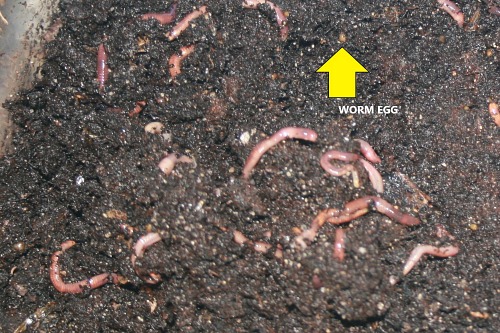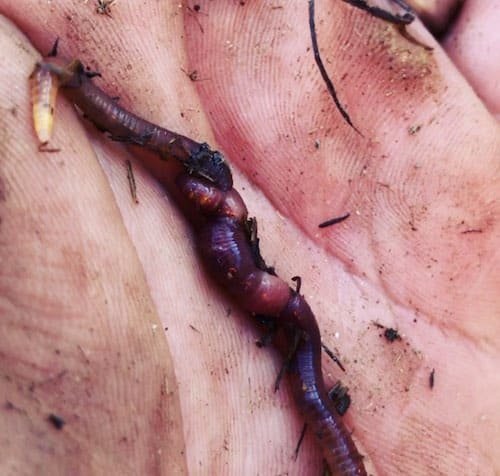Comprehensive Lawn Care Services from Red Wiggler Express
Comprehensive Lawn Care Services from Red Wiggler Express
Blog Article
Red Wigglers: The Unsung Heroes of Organic Waste Recycling
Red wigglers, or Eisenia fetida, function as critical representatives in the natural waste reusing procedure, transforming disposed of materials right into beneficial vermicompost. Their effective break down of natural issue not only boosts dirt high quality however also adds to lasting waste monitoring practices. As the world increasingly seeks remedies to battle waste build-up and boost agricultural productivity, understanding the role of these worms becomes important. What mechanisms allow them to thrive in garden compost settings, and exactly how can they be successfully used in both domestic and commercial settings? Discovering these concerns exposes the broader ramifications of vermicomposting in our environmental landscape.
What Are Red Wigglers?
The remarkable strength of red wigglers, clinically called Eisenia fetida, highlights their important role in natural waste recycling. These little, reddish-brown earthworms are commonly found in decomposing raw material, such as compost heap and manure loads. Lake Hickory Bait. Unlike other earthworm varieties, red wigglers grow in nutrient-rich environments and are very efficient at damaging down organic materials, making them important for vermicomposting

(Red Wiggler Express)In enhancement to their function in waste reduction, red wigglers add to soil wellness by improving dirt structure and aeration via their delving tasks (Lake Hickory Bait). Their presence in composting systems not only enhances disintegration rates yet likewise promotes a lasting approach to squander management, highlighting their significance in eco-friendly preservation efforts
Benefits of Composting With Worms
Composting with worms, especially red wigglers, uses various benefits that enhance both waste administration and dirt health and wellness. Initially, these worms efficiently break down organic waste, transforming it right into nutrient-rich vermicompost that improves dirt. This procedure accelerates decomposition, permitting a quicker recycling of kitchen scraps and various other organic materials compared to standard composting methods.
Furthermore, the vermicompost created by red wigglers is brimming with beneficial microbes, which assist enhance soil structure, aeration, and wetness retention. This enhances the total wellness of plants, promoting energetic development and raised yields in yards and agricultural setups. The usage of worms in composting minimizes the manufacturing of greenhouse gases, such as methane, contributing to an extra lasting waste monitoring system.

How to Beginning Vermicomposting
Developing a vermicomposting system is a straightforward process that can generate considerable benefits for both waste administration and soil enrichment. To begin, select an appropriate container, such as a plastic container or wooden box, with appropriate ventilation openings to ensure correct air flow. The dimensions should preferably be around 2 feet by 3 feet, allowing enough room for the worms to grow.
Next, prepare bed linens material, which can contain shredded paper, cardboard, or coconut coir. This bedding needs to be dampened to develop an ideal habitat for the worms. As soon as the bed linens remains in area, introduce red wigglers (Eisenia fetida) into the container, normally around one extra pound of worms for each square foot of surface area.
Complying with the placement of worms, add organic waste, such as fruit and veggie scraps, coffee grounds, and crushed eggshells. With these actions, you will efficiently initiate a vermicomposting system that contributes to lasting waste management and enriches your soil.
Preserving a Healthy Worm Container
(Red Wiggler Express)Keeping a worm bin prospering needs regular interest and care to guarantee the wellness of the red wigglers and the efficiency of the composting process. Appropriate maintenance starts with monitoring the wetness degrees; the container needs to be wet but not saturated. An excellent guideline is to keep a consistency similar to a wrung-out sponge.
Delicately blending the bed linen and food scraps every few weeks prevents compaction and guarantees that all worms have access to oxygen. In addition, it is essential to feed the worms appropriately.
Temperature level law is one more vital aspect. Red wigglers thrive in a variety of 55 to 77 degrees Fahrenheit. If the container ends up being as well hot or cold, the worms may end up being worried - Lake Hickory Bait. Last but not least, regularly examine for indications of health and wellness, such as worm population development and the existence of healthy and balanced castings. By vigilantly managing these factors, one can maintain a robust and productive worm bin.
Influence On Sustainable Living
The successful maintenance of a worm container not only profits the wellness of red wigglers however likewise adds considerably to sustainable living practices. By reusing organic waste, such as kitchen scraps and lawn particles, red wigglers assist draw away substantial quantities of material from landfills. This reduction in waste not only reduces greenhouse gas emissions however additionally minimizes the environmental burden connected with waste administration.
Furthermore, the spreadings generated by red wigglers serve as a nutrient-rich organic fertilizer, enhancing dirt wellness and advertising plant development. This natural option to chemical plant foods supports lasting agriculture and gardening techniques, reducing reliance on artificial inputs that can harm communities. In addition, worm composting promotes understanding of waste monitoring, motivating people and neighborhoods to adopt more sustainable behaviors.

Conclusion
In summary, red wigglers act as vital factors to natural waste recycling with their effective decomposition of natural materials. Their ability to create nutrient-rich vermicompost boosts soil wellness and sustains lasting agricultural techniques. By integrating vermicomposting right into waste management approaches, individuals and communities can considerably decrease waste while promoting environmental sustainability. The function of Eisenia fetida in fostering healthy communities highlights the importance of these microorganisms in accomplishing lasting living and enhancing dirt fertility.
Report this page